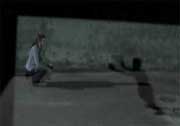Some collected thoughts on ‘real’ and ‘virtual’ spaces found a nice viceversa relation in the conceptual description of the installation mentioned below:
…
At the beginning of the 21st century, the notion of space as something more than physical—indeed something that may not be physical at all—is becoming more apparent with the prevalence of various technologies that create virtual realities. In his latest book, The Virtual, Shields takes his exploration of space a step forward. He examines the virtual spaces that are created through technology such as telephone lines, the Internet, video cams, and so forth. These spaces of human contact are obviously intangible, rather than physical, and yet they are also obviously “real†spaces of human contact.
This digital, virtual reality is not different, says Shield, than the virtual conceptions we hold and have held in our memories and imaginations of all of the spaces we inhabit. Even when we enter a physical space, we enter a virtual space as well; we cannot experience or comprehend any space without the filter of memory and consciousness.
(text excerpts from here)
In synthesizing these quotes from the ‘real’ relations to the virtual to the ‘virtual’-real concept of this kind of mystical interactive installation some congruent viceversa movement seems to emerge, which point to the same fact of non-graspable occupation of space eventhough seemingly accessed from two opposite sites of its definition. An interesting moment occurs here through the description of the virtual shadow simply as the abscence of light while our mind still reminds (and reads) it mostly as an object – light source relation. Thus this game-like interaction recalls exactly on some of the intangible ‘virtual’ spaces we are more or less invisibly surrounded with and already heavily engaged in as R.Shields points out in the above quoted description of his research.
| Shadow: … The virtual shadows slowly walk towards the participants. If the participants run away, the shadows will follow. If the participants move towards the shadows, they will retreat. If the participants stay relatively still, the shadows will slowly approach. The shadows will then position their feet directly on top of the participants’. |  |
This act merges the participants’ own shadows with the virtual shadows. Once merged, the virtual shadows disappear.
…
Our shadows feel as if they are extensions of our bodies. They are with us constantly yet we pay little attention to them. These shadows are the absence of light due to our presence. The installation removes the presence, leaving only this representative void. The autonomous shadows create the intense sensation of both presence and absence simultaneously. Shadow merges viewer and artwork, the real and the virtual, into one entity. Along with the conceptual, there is a strong emotional and intimate component to this piece. The feeling of both the presence and absence of another human being is visceral and ghostly. In a sense, this piece functions as a quiet, interactive, anonymous memorial.
sources: placement, networked performance
